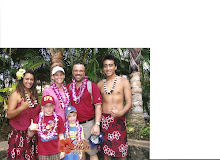












I've been doing a lot of learning about learning this year, as you can imagine. The neat part about all of the theory I am digesting is that in absence of a real classroom with which to put some of these ideas into practice, I am finding that my/our personal life is a most able substitute. Take, for example the ideas of situated cognition and metacognitive learning. The first idea suggests that we learn best by doing, often in the place for which the skill is relevant. The other idea is a little more abstract but essentially concerns itself with the need for reflection in the learning process. In other words, people/students need to absorb ideas and be allowed an opportunity to think about and work through how those ideas relate to one's prior knowledge, view of the world, etc. in order to acquire new meaning. In so much of what we have done and seen in this year abroad I have learned something by both experiencing it and then reflecting on "what it all means". Our last days in New Zealand were no exception.
About an hour "up the road" from Dunedin you start to drive along the coast. And in this stretch of endless beach is a place called the Moreaki Boulders. Now, I suppose it's not so much a place as a spot, with a cafe and gift shop, where there is something interesting to see. What is indeed interesting to see are these perfectly round, one million year-old boulders scattered on the beach. They are immediately stunning and fascinating at the same time and they draw you in irresistibly like a mouse to cheese. I have forgotten the geological reasons behind their formation and existence on only this one, small spot of beach, but that just lends more to the mystery. We all had fun climbing up, over and around them and imagining the forces at work to create such odd natural shapes. Mere minutes before I might have said that only mountains could inspire such wonder in the natural world, but situated beside these unearthly balls, my cognition for how the world works was forced to change; something it would have staunchly refused to do staring at the same boulders on tv or in National Geographic.
Leaving thoughts of "what it all means" for another day, we turned north again for Christchurch. A few rather mundane hours of driving later, we checked in to our busy but "interesting" hotel (who hands out those stars anyways?) and decided that a Teppanyakki restaurant was a fitting final meal for some road-weary palates. Or maybe it was just Lint's craving for sake. After a fun meal (though no flaming onion tower) and some free parking we headed back to our motel eager for a little shut eye before the big travel day. Unfortunately, an extremely loud fire alarm roused us from our slumber at 3am and our combined reactions, along with a few wicked cases of bedhead, were a combination of delerium, hatred and abject terror. Nothing primes the adrenalin faster than a screaming siren in the middle of some serious REM sleep.
The next morning, our plane wasn't scheduled to depart until 2 pm which left us plenty of time to do one last touristy thing - the Antarctic Centre! Christchurch is home to a full 70% of all flights to the Antarctic and as such, has an enormous and very well equipped interpretation centre adjacent to the airport. We had great fun exploring the exhibits, the highlight of which might have been the Storm Room where they can recreate -20 Celsius conditions with a wind chill much greater than that. Colin did it in shorts! The other laugh was a wild ride in a Haggland(sp?), a tank-like vehicle specially equipped for negotiating crevasses and ice flows. There were plenty of screams by all as we headed up and down the "Hill of Insanity" - or whatever it was called. Soon after all that fun, we boarded our JetStar flight and headed for home, keen to show Nanny and Grampa our Melbourne life.
And so then to the meta-cognitive stuff I was yammering on about at the beginning of this blog. Over the year, I have come to appreciate the fact that it may only be through travel that one can really learn about another place. Textbooks, internet, maps and photos can help, but there is no substitute for breathing in the air and soaking up the sounds, the smells or the feeling of standing in the actual place - be it Milford Sound or the corner of Yonge and Eglinton. And just as that might be true, in terms of really knowing a place, I also feel that it is only upon reflection and by comparing that experience to one's prior knowledge, that we are able to burnish new and better meanings about the world and our relationship to it. In that regard, our trip to New Zealand taught me a lot about my understanding of the world, but it was only a perspective that I could "see", or perhaps fully appreciate, in hindsight, when the wheels of our plane touched down back in Melbourne.


No comments:
Post a Comment